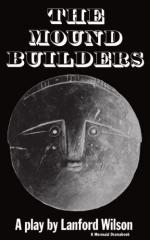CONCLUSION.
Our investigation has now come to an end. I have led you to examine the few fragments of a civilization which it would be absurd to declare to have been of the very highest type, but yet of a character much above that of the wandering tribes, which, with their well-known thirst for blood, destroyed the very arts and useful habits which might have bettered their condition. The whirlwind of barbarian fury is ever one which fills peaceful nations with terror. We may remember how near in the “Agony of Canada,” the French power was to being swept out of existence by the fierce fury of the Iroquois—up to that time always victorious. We may remember how civilization in Minnesota was thrown back by the Sioux massacre of 1861. It is only now by persistent and unwearied efforts that we can hope to conquer the Indians by the arts of peace, and by inducing him to take the hoe in place of the tomahawk, to meet nature’s obstacles. Who can fail to heave a sigh for our northern mound builders, and to lament the destruction of so vast and civilized a race as the peaceful Toltecans of Mexico, of the Mississippi, and of the Ohio, to which our Takawgamis belonged? After all, their life must in the main, ever remain a mystery.
THE LOST RACE
“One of our visits to the mound was at night.”
Oh, silent mound! thy
secret tell!
God’s acre gazing
toward the sky,
’Midst sombre
shade ’neath angel’s eye
Thou sleepest till the
domesday knell.
Sweet leaflets, on the
towering elms.
Oh whisper from your
crested height!
Or have lost forests
borne from sight
The secret to their
buried realms?
Stay, babbling river,
hurrying past,
Cans’t thou, who
saw’st the toilers build,
Not picture on thy bosom
stilled,
Life-speaking shadows
long since cast?




